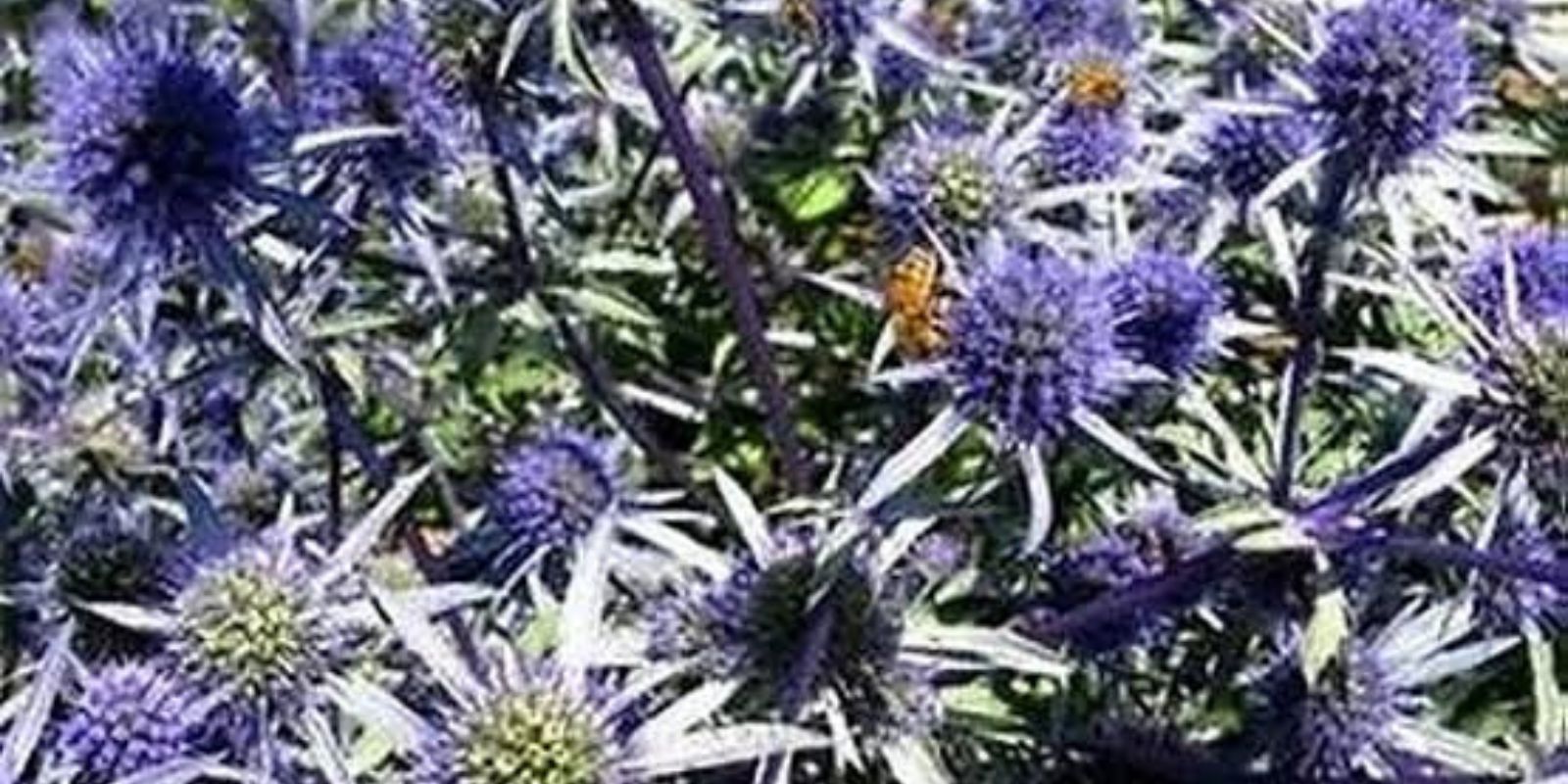Introduction
As climate patterns shift and dry spells become more common, gardeners face a unique challenge: how to maintain vibrant, thriving gardens with minimal water. Enter drought-tolerant plants—species designed by nature to survive and even flourish in arid conditions. Among these, sea holly (Eryngium) stands out as a top choice. This striking perennial, with its spiky, metallic-blue flowers, is not only visually captivating but also a powerhouse in low-water gardens. In this article, we’ll explore the unique attributes of sea holly, how to care for it, and 25 more drought-tolerant plants to consider for your garden.
What Makes Sea Holly Special?
Native to coastal regions, sea holly is naturally adapted to withstand harsh sunlight, dry soil, and windy conditions. Its deep taproot allows it to access moisture far below the soil’s surface, making it a champion of drought resistance. Beyond its resilience, sea holly brings a unique aesthetic to gardens with its dramatic blooms, which add architectural interest and attract pollinators like bees and butterflies.
How to Grow and Care for Sea Holly
1. Choose the Perfect Spot
Sea holly thrives in full sun, so select a location that gets at least 6–8 hours of direct sunlight daily. It’s highly adaptable and can grow in poor, sandy, or rocky soil, as long as it drains well.
2. Planting Tips
- Sow seeds or plant seedlings in spring after the last frost.
- If planting seeds, sprinkle them lightly on the soil surface and cover with a thin layer of sand. Germination can take several weeks.
- For seedlings, dig a hole just deep enough to cover the roots, ensuring the crown is level with the soil surface. Space plants 18–24 inches apart to provide ample room for growth.
3. Watering Requirements
- During the first few weeks after planting, water lightly to help the plant establish its roots.
- Once established, sea holly is highly drought-tolerant and only requires watering during prolonged dry spells.
4. Fertilizing and Soil Care
- Fertilizer is generally unnecessary. In fact, overly fertile soil can result in weak stems and reduced flowering.
- If desired, add a small amount of compost during planting to boost organic matter.
5. Maintenance
- Deadhead spent flowers to encourage more blooms.
- Allow foliage to die back naturally in the fall; this helps the plant store energy for the next growing season.
- Sea holly is hardy and can handle harsh winters, but mulching around the base can offer added protection in colder climates.
6. Companion Planting
Pair sea holly with other drought-tolerant plants like lavender, sedum, and yarrow for a cohesive, low-maintenance garden. Its striking blue hues contrast beautifully with soft greens and silvers.
25 More Drought-Tolerant Plants to Consider
Building a drought-resistant garden doesn’t mean sacrificing beauty or diversity. Here’s a list of additional plants that thrive in dry conditions:
- Lavender: Aromatic, low-maintenance, and perfect for pollinators.
- Sedum (Stonecrop): Succulent leaves and vibrant flowers make this a standout.
- Yarrow (Achillea): Clusters of colorful blooms and feathery foliage.
- Echinacea (Coneflower): Hardy and available in a range of colors.
- Salvia: Long-blooming and a favorite of hummingbirds.
- Russian Sage (Perovskia): Tall spires of lavender-blue flowers.
- Agave: A bold succulent that’s both architectural and drought-tolerant.
- Thyme: A groundcover herb that’s tough and fragrant.
- Penstemon: Delicate bell-shaped flowers on upright stems.
- Coreopsis: Bright daisy-like flowers that bloom for months.
- Blue Fescue (Festuca glauca): Ornamental grass with silvery-blue tufts.
- Gaillardia (Blanket Flower): Vibrant blooms that resemble sunbursts.
- Artemisia: Silver foliage that adds texture and contrast.
- Bougainvillea: A vining plant with vibrant bracts.
- Cactus: A diverse group with incredible drought tolerance.
- Oleander: Hardy shrub with showy flowers.
- California Poppy: Bright orange blooms perfect for wildflower gardens.
- Verbena: Low-growing and colorful, ideal for borders.
- Kangaroo Paw (Anigozanthos): Unique, fuzzy blooms from Australia.
- Hens and Chicks (Sempervivum): Succulent rosettes that multiply easily.
- Golden Barrel Cactus: Iconic spherical shape with yellow spines.
- Zinnias: Long-lasting flowers in an array of colors.
- Bougainvillea: Perfect for adding vibrant color to fences or walls.
- Oleander: Hardy shrubs that thrive in dry, sunny areas.
- Portulaca (Moss Rose): Groundcover with vibrant, rose-like blooms.
Benefits of a Drought-Tolerant Garden
- Water Conservation
Drought-tolerant plants require minimal watering, helping you conserve this precious resource and reduce your water bill. - Low Maintenance
Once established, these plants thrive with little intervention, making them perfect for busy gardeners. - Environmental Impact
By choosing native and drought-resistant species, you support local ecosystems, reduce chemical usage, and create habitats for pollinators. - Year-Round Beauty
Many drought-tolerant plants are evergreen or have striking foliage, ensuring your garden looks beautiful even in the off-season.
Designing a Drought-Tolerant Garden
- Focus on Soil Preparation
While many drought-tolerant plants can handle poor soil, improving drainage with sand or gravel will enhance their growth. - Group Plants with Similar Needs
Design your garden so plants with similar watering and sunlight requirements are grouped together for easy maintenance. - Incorporate Mulch
Add a layer of mulch to retain soil moisture, reduce weeds, and regulate temperature. - Use Hardscaping
Incorporate rocks, gravel, or pathways to complement your drought-tolerant plants and reduce lawn space.
Conclusion
Sea holly and other drought-tolerant plants are the perfect solution for gardeners looking to create beautiful, sustainable, and low-maintenance gardens. With their ability to thrive in challenging conditions, these plants not only reduce water consumption but also support local wildlife and enhance garden aesthetics. By incorporating sea holly and other resilient species into your backyard, you can enjoy a vibrant, thriving garden—no matter how dry the summer gets.
💬 What’s your favorite drought-tolerant plant? Share your tips and experiences in the comments below!

